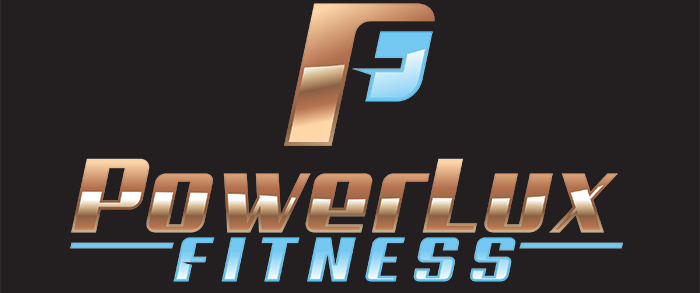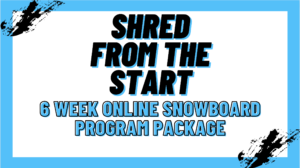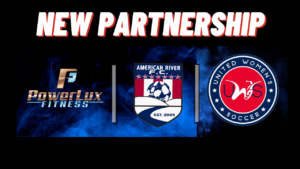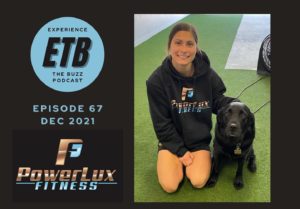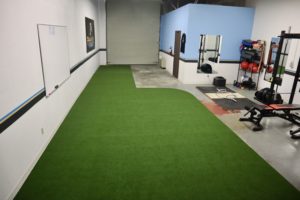
For the video version, click here or on the image above to catch the full video on YouTube!
Hello Hello!! So I’m going to jump out on a limb here and make the assumption that if you’re reading this article, you’re either interested in getting a full body workout to train like an athlete, or you just thought we had a sick website and wanted to check it out! Both are completely valid answers, and I will happily accept whichever one it is. As of late, I haven’t been in a “reading mood” really. It’s like when you google something, and you have two websites that you click on for information, one is a long ass document that might as well have been someone’s thesis, and the other website is wikihow. Now 12 times out of 10, I’ll go to wikihow first just because who doesn’t like quick information with pictures?! It’s the perfect recipe for success! You get to play a little game of Pictionary, trying to decipher what the picture is showing, and if you’re stumped, you can bail yourself out by looking at the caption. I mean, don’t get me wrong, there’s plenty of times I’ll read that book they call a web article, but I gotta be in dire need for some legit information before I put myself through that.
You’re probably thinking to yourself, “yes, Madison, you’re totally right, I’m the exact same way. But why did I click on an article for a full body workout for athletes, and now I’m reading about wikihow and pictionary?” Well, by clicking this article, you knew you’d get a rockin full body athletic workout, but you didn’t know that you’d also be blessed with my amazing ability to go off on tangents, while still bringing it back around to the topic of discussion: theses. No wait, I mean full body athletic workouts…
Okay, now I’m ready to roll with this full body strength and power workout for athletes or for training like an athlete. If you’ve seen my other articles or YouTube videos (or simply just read my home page), you’ll know that PowerLux Fitness is a lifestyle performance fitness company, where we apply athletic training principles to everyday people. Simply put, we train everyone like we train our professional athletes. So whether you’re an athlete checking this out, or you play sports as a hobby and want to improve your performance, this will benefit you.
Typically with sports performance training, I won’t do much in the way of a full body workout. I like to split the training into 1 or 2 movement patterns (squat, horizontal push, posterior chain, etc.) and different disciplines (power, strength, change of direction, etc). But some days, it’s just a full body type of workout feeling. So I put together a workout I’d run some athletes through if we’re hitting a full body session. Now, when we do workouts like this, we don’t want to try to max out on anything. It’s not about making strength gains or getting new power PRs. It’s about firing up your muscles, while continuing to apply stimuli to the CNS. If I wanted an athlete to focus solely on strength, power, speed, posterior chain, squats, etc., I would separate these focuses into different days to allow for max specificity of movement. However, the goal here is, like I said, fire up the muscles and CNS, while still putting our body through an effective workout.
If you know me, you know I love contrast and complex training for athletic performance. The research around this speaks for itself, and I’ve seen plenty of results myself. I have made a lot of videos with contrast/complex style workouts, so make sure you’re heading over to YouTube to check them out. But for those of you who don’t know what this workout style is, basically it refers to performing a strength movement followed by a power movement. The strength move heightens our nervous system, allowing PAP (post activation potentiation) to do its thing, so when we go to perform our power move right after, we actually perform it at a higher quality (more powerful, more explosive, etc.) That’s just a quick synopsis, but if you want a more in depth article about contrast/complex training, hit me up in the comments!
So in this full body workout, I’m utilizing a variation on contrast training. Our first group is going to be strength, followed by a power group, looking like this:
1A) Strength
1B) Strength
2A) Power/Plyos
2B) Power/Plyos
This is different than usual complex training, where it’s:
1A) Strength
1B) Power
2A) Strength
2B) Power
However, I programmed it this way to allow for a full heightening of the CNS and to get our muscles firing at a fast rate. PAP is optimal anywhere from 3-12 minutes after the strength movement is performed, since this amount of time allows for rest, while still keeping that elastic energy in our muscles (even though some research shows that as little as 30 secs is effective so it lowkey varies). So, for this workout, we’re rolling with strength first up, then power/plyometrics, followed by strict power, and finishing with some auxiliary strength.
Okay, Okay, you’ve waited long enough to see the actual workout, so here it is:
Prep:
a) Face Pulls into OH Press 3×15
b) Dead Bugs 3×20 (total)
c) Hammie Walkouts 3×8

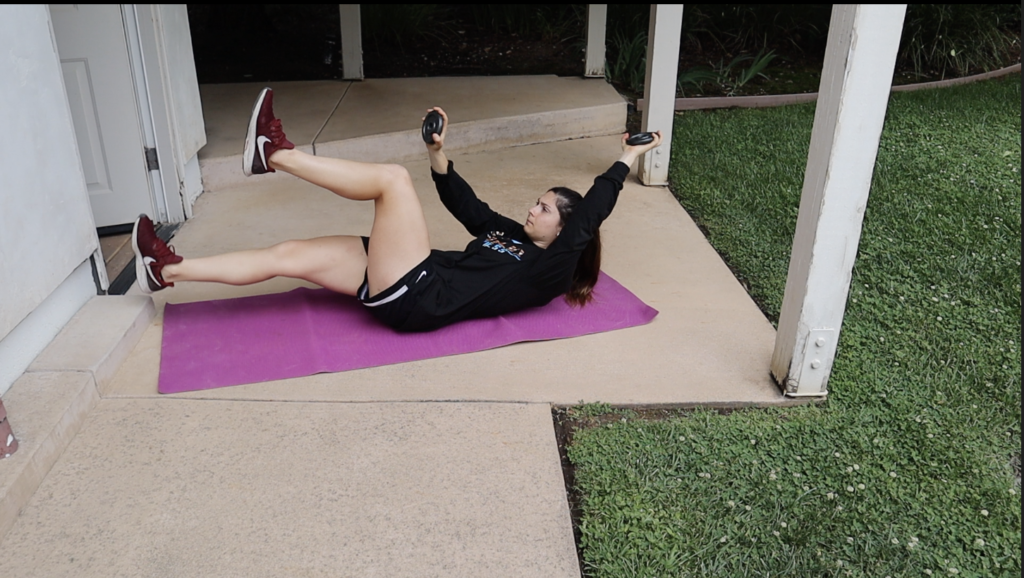
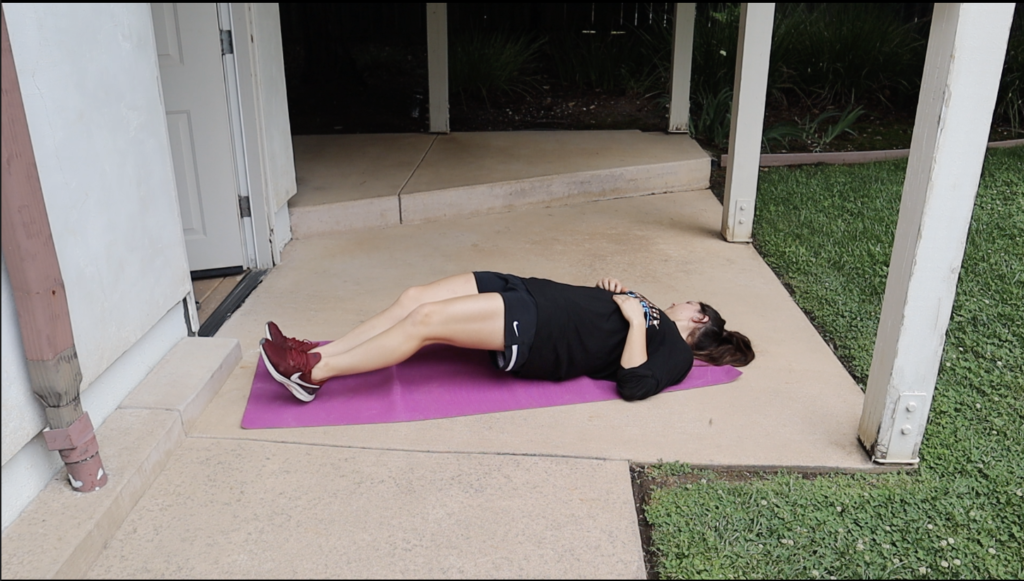
Group 1: 3 sets
1A) OH BB Press x8
1B) Back Squat x5
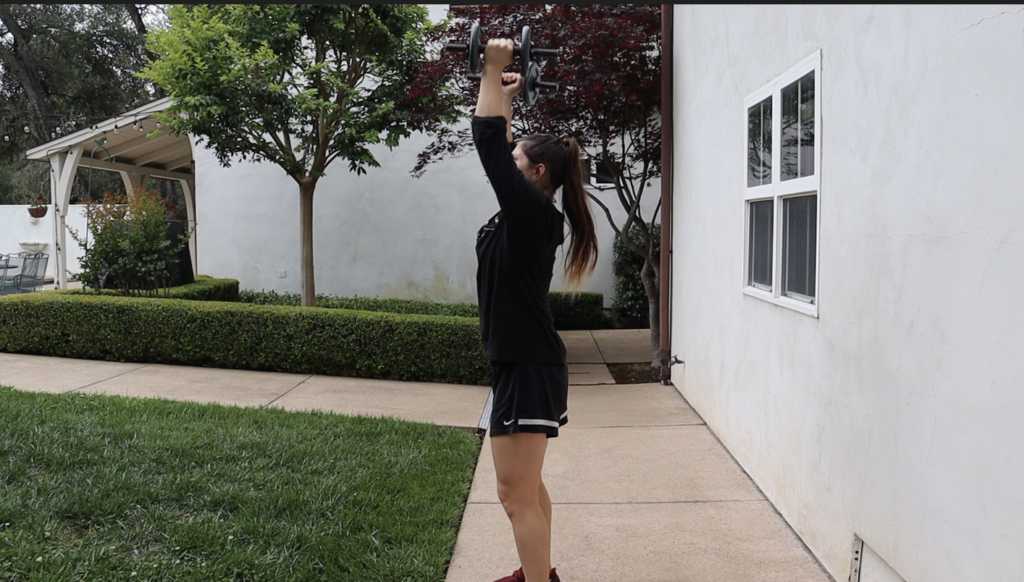
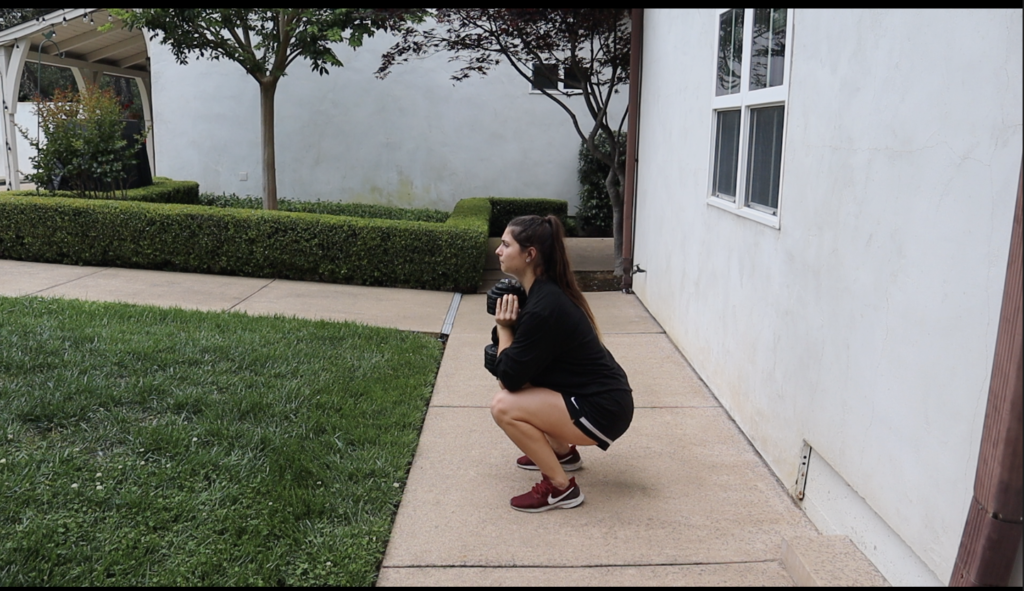
Group 2: 3 sets
2A) MB Pump Fake Slam x3
2B) Split Squat Forward Jumps x6 (total)
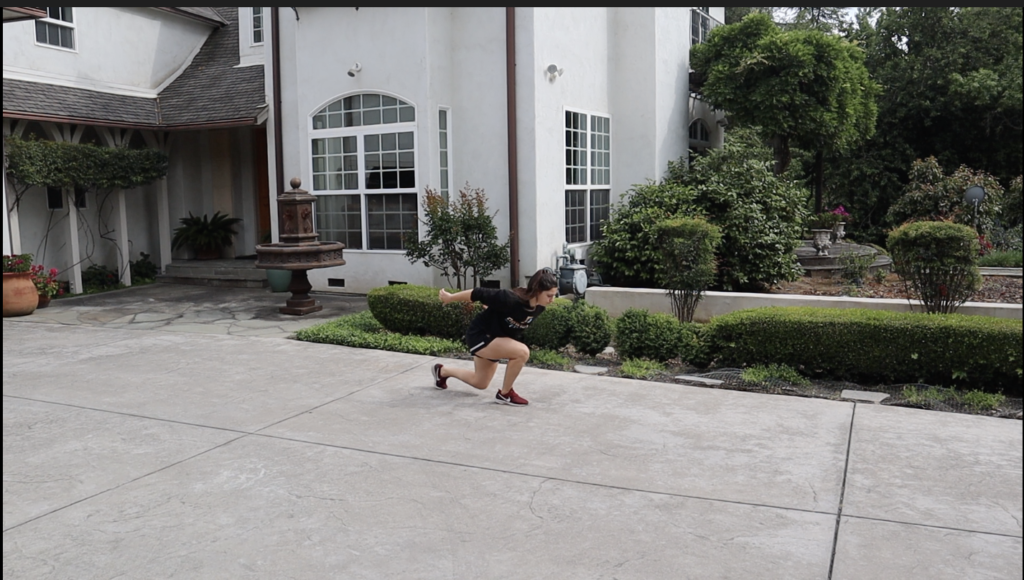


Group 3: 6 sets for 3A, 4 sets for 3B
3A) 2 DB Squat Jumps into 1 Bodyweight Squat Jump x 1
3B) Fast RB Rows x 5 (ea. arm)
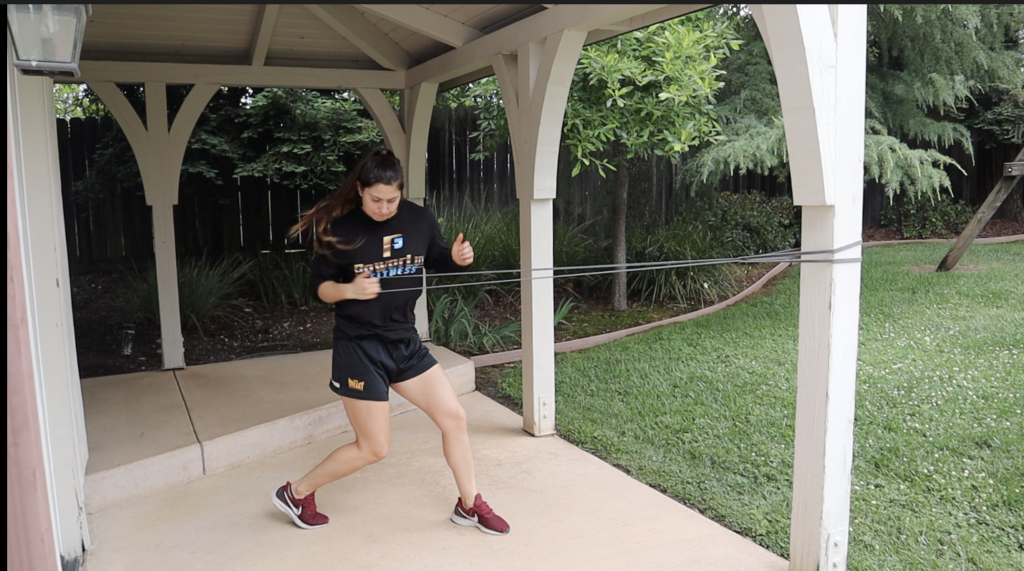
Group 4: 3 sets
4A) Front Foot Elevated Split Squat x10 ea.
4B) SA DB Chest Press x10 ea.
4C) SL RDL x10 ea.
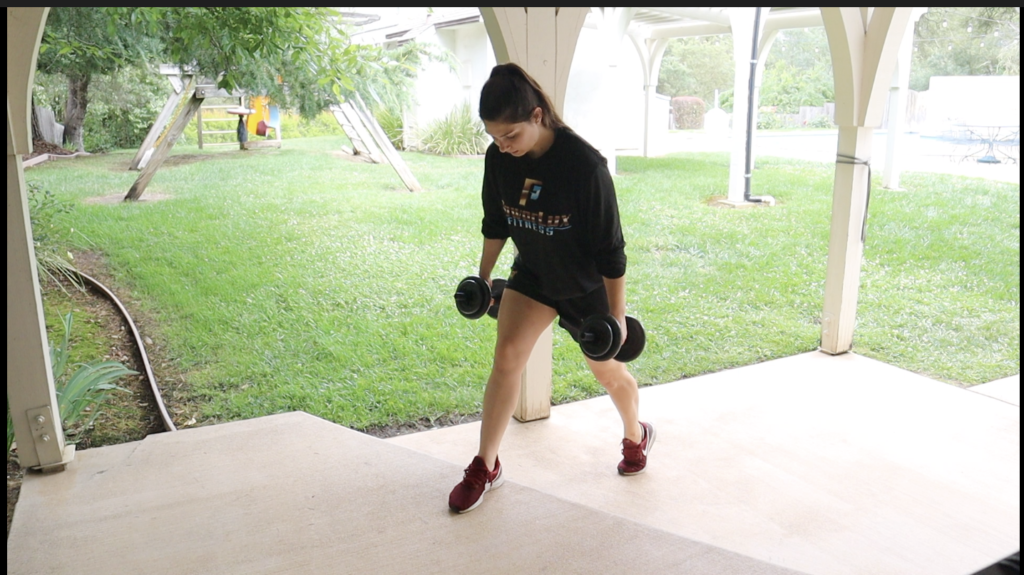
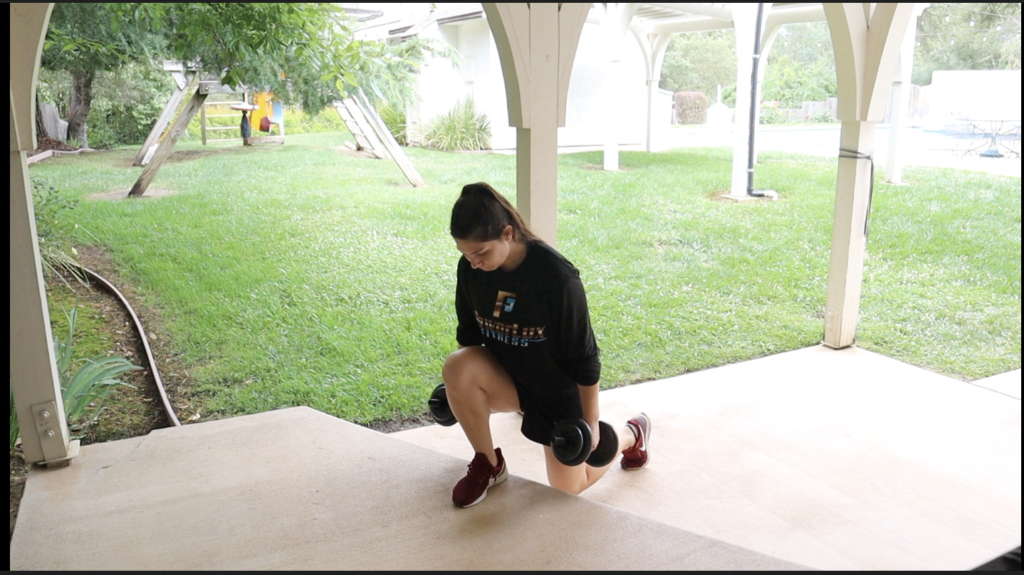
To see me perform these exercises and to make sure you’re utilizing proper technique, please watch the video (click here) before beginning!
Just some real quick sparknotes on these groups:
Group 1: This is a strength set, so don’t be afraid to go heavy. You want to be able to perform 8 reps of the BB Press and 5 of a Backsquat. This isn’t a 1RM, but it’s also not supposed to be a walk in the park. Even though these are strength moves, I want you in control of the weight and to be moving it with a little speed. Try to get some explosiveness in there, while not switching the focus from strength to power.
Group 2: These are mostly plyometric exercises. We’re taking the movements from group 1 and applying some power/speed to them to get group 2. I want these to be done as powerfully as possible. With the MB Pump Fake Slam, try to break the damn ball when slamming it down, but maintain balance and stability. With the SS Jumps, try to jump as far forward as possible, driving off the front leg, and landing with control. Absorb the landing, and produce force immediately. Don’t wobble around; if you do, then focus more on the landing than the distance you’re jumping.
Group 3: This is straight power shit. I want these POWERFUL and EXPLOSIVE. With the squat jumps, I want you trying to jump so high you’re about to hit your head on the sky. After the 2 DB jumps, immediately drop the DBs, and explode into your BW squat jump. This is easier than the DB jumps obviously, but that means you should be getting higher off the ground as well. Make sure to stick the landing, keeping your feet under your shoulders! The Fast RB rows are amazing if done correctly. Get in your staggered stance (ex: left leg forward if right hand holding RB), engage your core and lower body for stability, and row as aggressively as possible without throwing your body out of control. Don’t lose balance, pull with your back, stabilize with your trunk and legs, and try to rip the band off the pole.
Group 4: Auxiliary strength is extremely important. Similarly to Group 1, this isn’t meant to be a new strength PR. This is to build strength in isolated areas based on the movements the workout was focused on. Pick a challenging weight for the allotted reps, but I want quality reps. Check your ego at the door, and pick the right weight. Athletic training isn’t bodybuilding training. It’s not all about lifting as much weight as possible to gain muscle mass. It’s about efficient and effective movement. For the FFE Squat, drive off the front leg, getting that back leg into full extension. You know how to do a SA Chest Press: stabilize through the trunk, keep your feet on the ground for support, and extend that arm straight into the air, no forward or backwards movement. Lastly, the SL RDL. This is going to be a contralateral load, so the DB is in the opposite arm of the leg that extends back. Keep your hips down, don’t allow them to open up and throw you off axis. Keep your core tight, focus on the hip hinge, have your chin tucked to keep your spine neutral, and drive through your glute. Once again, the key here is balance and glute/hamstring engagement, so pick the right weight that will help your movement.
Well, that about wraps up this article! I hope it was helpful to all of you out there looking for an athletic full body workout! Make sure you’re checking out our instagram, @powerlux_fitness, and our YouTube Channel for more athletic workouts and ways to train like an athlete for the everyday person! If you’re interested in working with PowerLux Fitness, if you want programming, training, or a consultant, don’t hesitate to reach out! We have top of the line trainers with experience training professional athletes ready to help you!
Until next time, stay rad! ??
